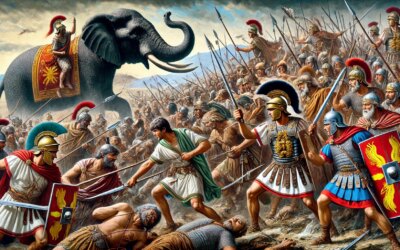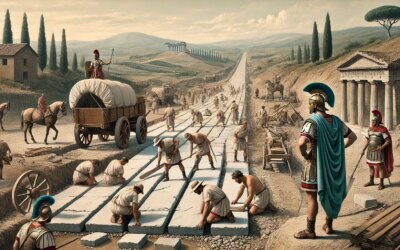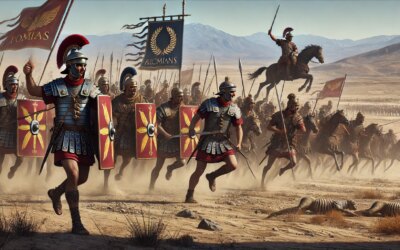Introduction: A City in Ashes
In 390 BC, Rome was reeling from the most catastrophic invasion in its early history. The city had been sacked by a roving band of Gauls led by Brennus, its temples desecrated, its forums deserted, and its Senate silenced. In this darkest hour, a single figure emerged from exile and legend to reclaim Rome’s dignity: Marcus Furius Camillus. His triumphant return, both military and symbolic, would forever cement his place as one of the Republic’s foundational heroes.
The Gallic Invasion and the Sack of Rome
The Gauls, likely of the Senones tribe, descended upon central Italy in the early 4th century BC. After a confrontation with Roman forces at the Battle of the Allia, just north of the city, the Roman army was routed. On July 18, 390 BC—a date etched in infamy—the Gauls marched unopposed into Rome. Most citizens fled. The elderly and infirm perished or remained behind. The Capitoline Hill became the last bastion of Roman resistance.
Camillus in Exile
At the time of the invasion, Camillus, a former dictator and military hero, was living in exile in Ardea. Political enemies had accused him of corruption after his victories over Veii. Bitter and disillusioned, he had withdrawn from public life. But as word spread of Rome’s peril, Camillus was recalled by a desperate Senate-in-exile and granted absolute command as dictator—a role revived only in times of existential threat.
The Relief of the Capitoline and the Gauls’ Withdrawal
Camillus rallied allied forces and marched north. According to Livy, just as the Romans trapped on the Capitoline were negotiating ransom with Brennus, Camillus arrived and refused the terms. “Not with gold, but with iron,” he reportedly declared. In a decisive counterattack, Camillus routed the Gauls and liberated the city. Though some modern historians question the exact sequence, the narrative of Camillus as Rome’s savior became a cornerstone of its civic mythology.
Rebuilding Rome and Moral Restoration
Camillus did not merely drive out invaders—he began the physical and moral reconstruction of the city. Despite calls to abandon Rome for the safer, more prosperous Veii, he convinced citizens to rebuild. He revived religious institutions, public offices, and the militia. His reforms reestablished Roman identity after the trauma of occupation. Camillus was hailed as Second Founder of Rome—a title later echoed by Augustus centuries later.
Legacy and Legend
Camillus would go on to serve in five dictatorships and multiple consulships. He defended Rome again during conflicts with the Volsci, Aequi, and Etruscans. Yet his most enduring contribution was symbolic. He personified Roman virtus—courage, discipline, and unwavering loyalty to the res publica. His tale, whether fully factual or partially embellished, became required lore for Roman statesmen and generals alike.
Historical Debate and Mythmaking
Some modern historians see the Camillus narrative as a blend of historical memory and patriotic invention. The dramatic details—such as the delayed ransom and heroic last-minute battle—may reflect Roman ideals more than verifiable events. Still, the emotional truth remains: Rome survived, recovered, and rose anew. Camillus became the symbol of that resilience.
Conclusion: The Man Who Refused to Let Rome Die
In 390 BC, as Rome lay charred and broken, Marcus Furius Camillus returned not just to lead, but to resurrect. His defiance of defeat, his moral clarity, and his vision for Rome’s rebirth turned tragedy into triumph. More than a general, Camillus became a myth—and in doing so, laid the groundwork for the Rome that would one day conquer the world.






